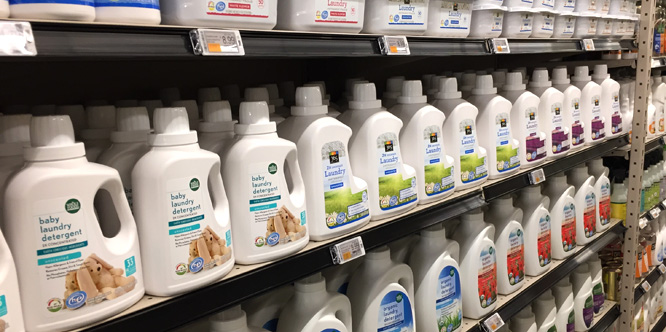
Source: RetailWire
Inflated grocery prices have thrown a spotlight on the battle for market share between national and store brands.
Branded CPG manufacturers’ top strategies for competing with private labels include marketing their brands’ quality, cited by two-thirds as a top-two strategy, followed by launching innovation (55 percent), according to Advantage Solutions’ “Manufacturer and Retailer Outlook Spring 2023” study.
CPG manufacturers also seek to offset the private label threat by increasing trade promotions, cited by 32 percent among their top-two strategies; executing in-store shopper marketing programs, 27 percent; and lowering everyday prices via list price reduction, five percent.
PLMA’s “2023 Private Label Report,” produced by IRI Unify, found private label sales advanced 11.3 percent in 2022, nearly twice the growth of national brands, up 6.1 percent.
The gains were attributed to consumers looking for savings amid “persistent inflation.” Another driver was store brands being more transparent about their make-up as consumers post-pandemic have become “more concerned about how products are made and what’s in them, from their raw ingredients and holistic health attributes and qualities to their sustainability.”
In the first quarter, store brand dollar volume jumped 10.3 percent, nearly twice the 5.6 percent gain of national brands, according to PLMA’s latest findings.
“The Q1 results are particularly impressive since they are compared to 2022 sales figures, which were historically high for U.S. store brands,” said PLMA President Peggy Davies.
A recent survey from Attest found 74 percent of U.S. consumers would “definitely” or “probably” keep buying store brands after inflation eases.
CPG vendors, according to the Advantage Solutions’ study, were found to be less inclined to raise prices in the March survey versus a survey taken in December as inflation has lessened but also showed few signs of resetting prices lower.
The top manufacturer’s tools to remain competitive at the shelf, according to Advantage Solutions’ study, were (respondents selected three):
- Off-shelf merchandising, 55 percent;
- Digital couponing, 45 percent;
- Supporting retail-focused marketing programs, 42 percent;
- More aggressive promotional price, 35 percent;
- In-store shopper marketing programs, 27 percent;
- More frequent temporary price reductions, 27 percent;
- Promote in multiples, 23 percent;
- Lowering everyday price, nine percent;
- Shelf POP to match brand-marketing message, nine percent.


Leave a Reply
You must be logged in to post a comment.